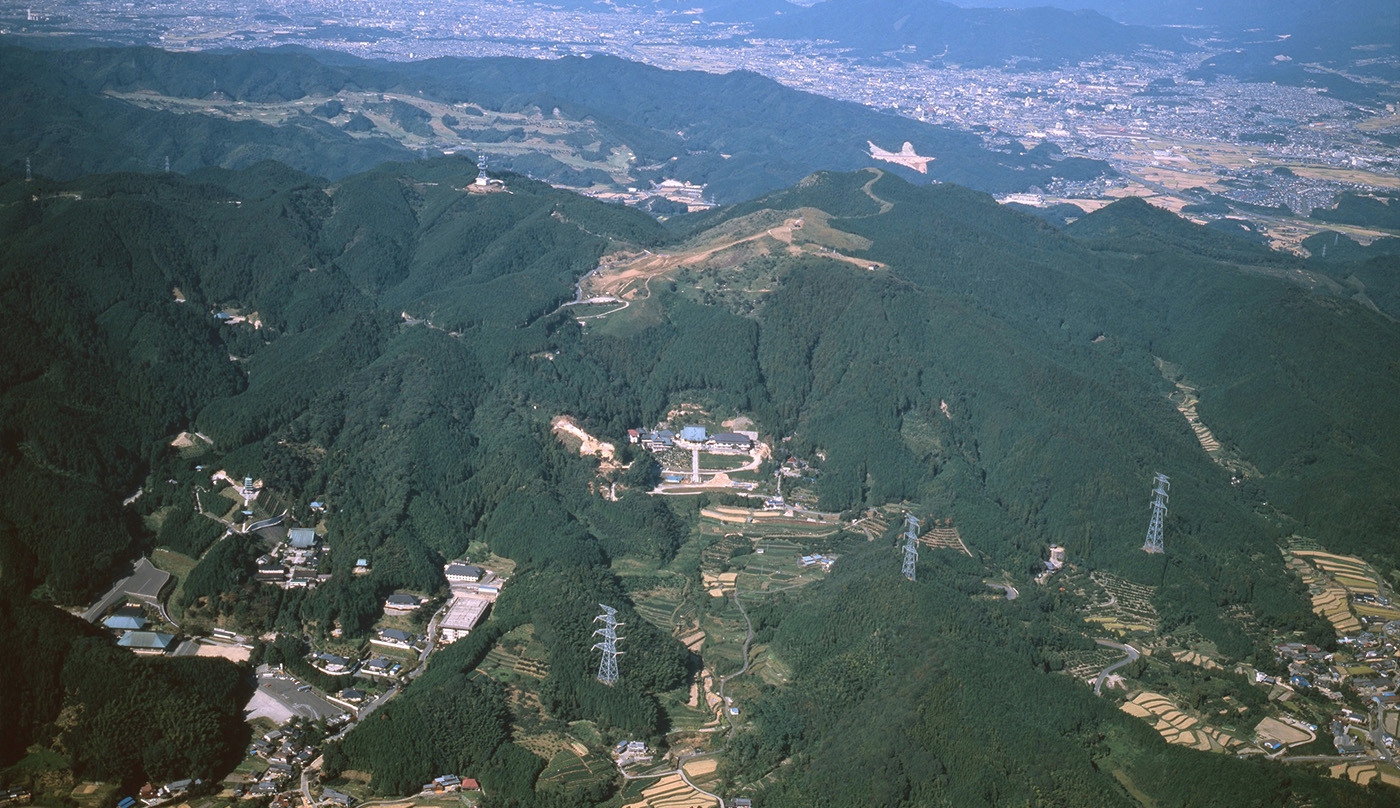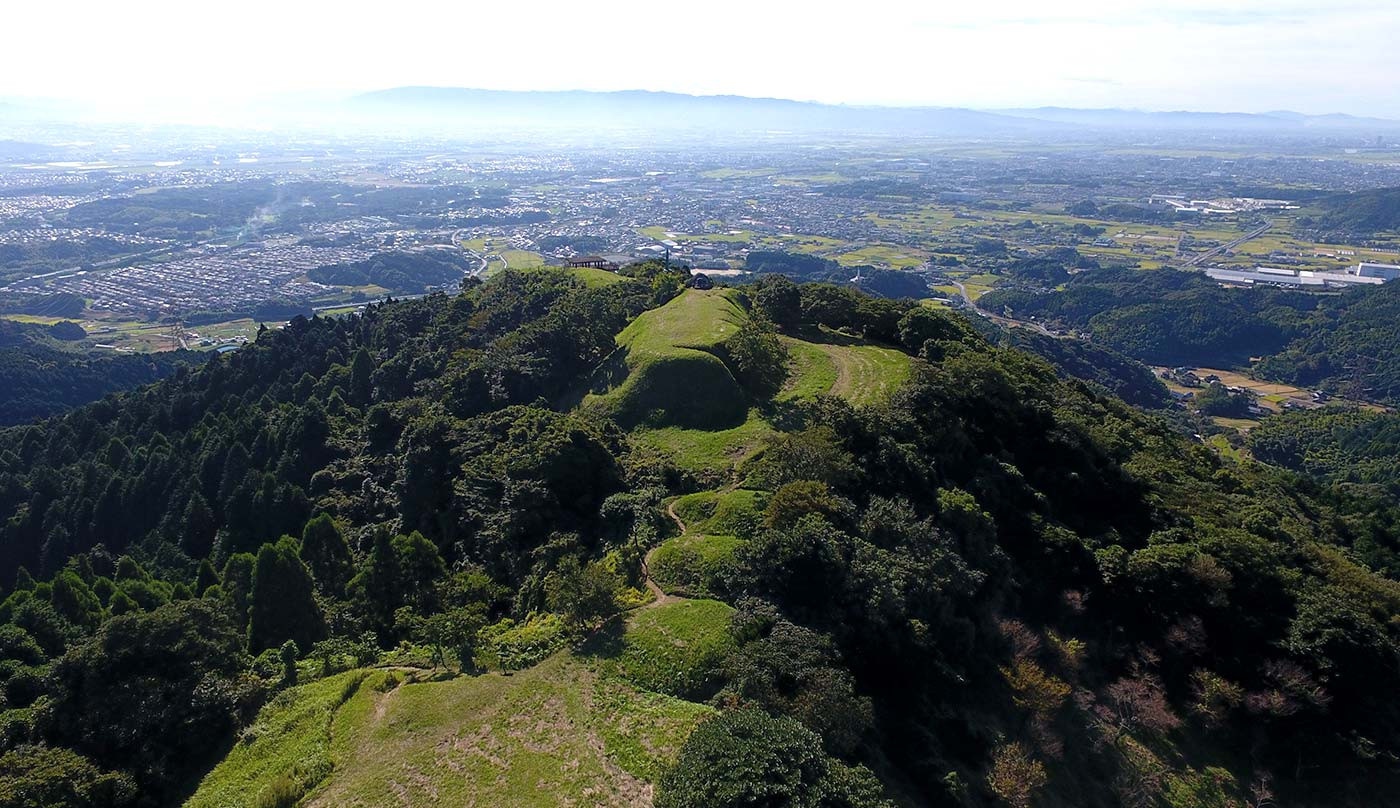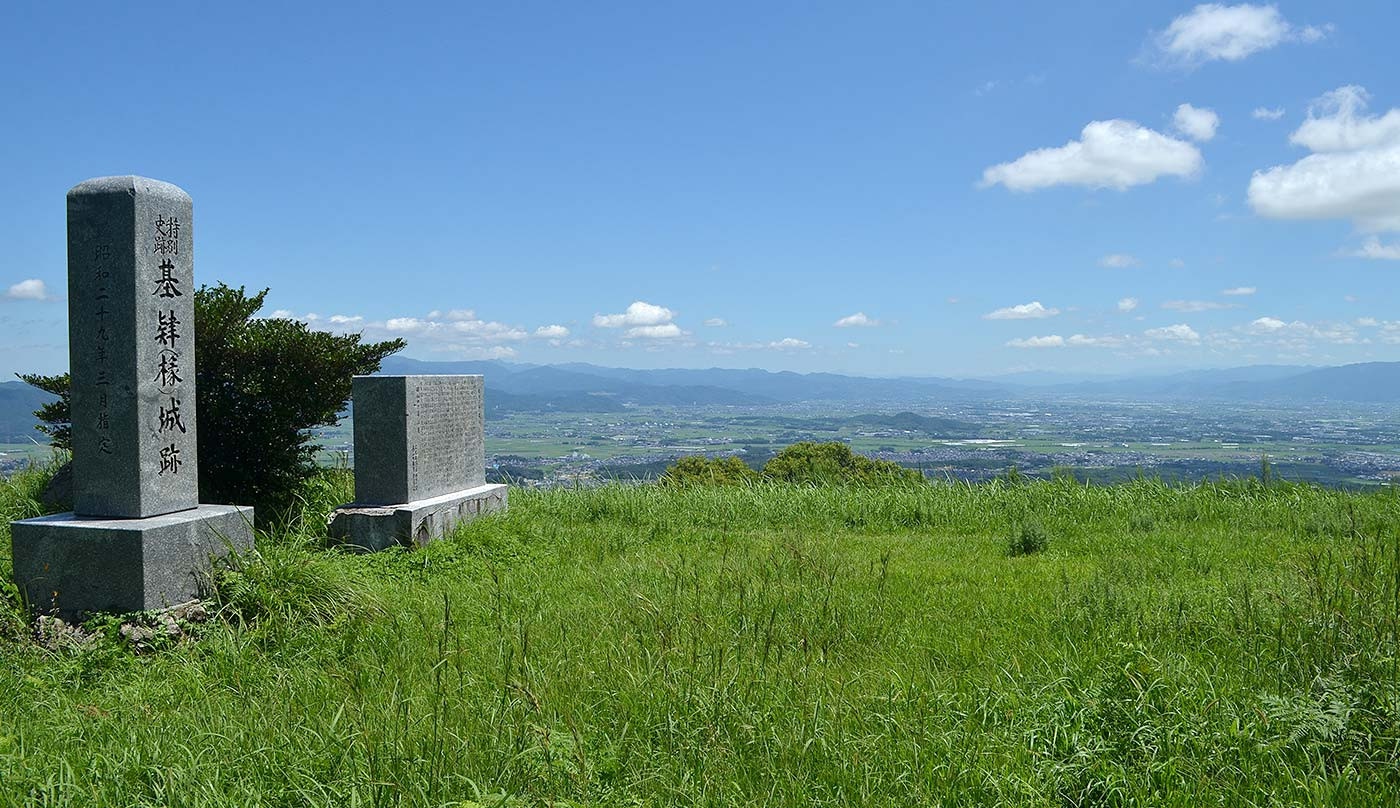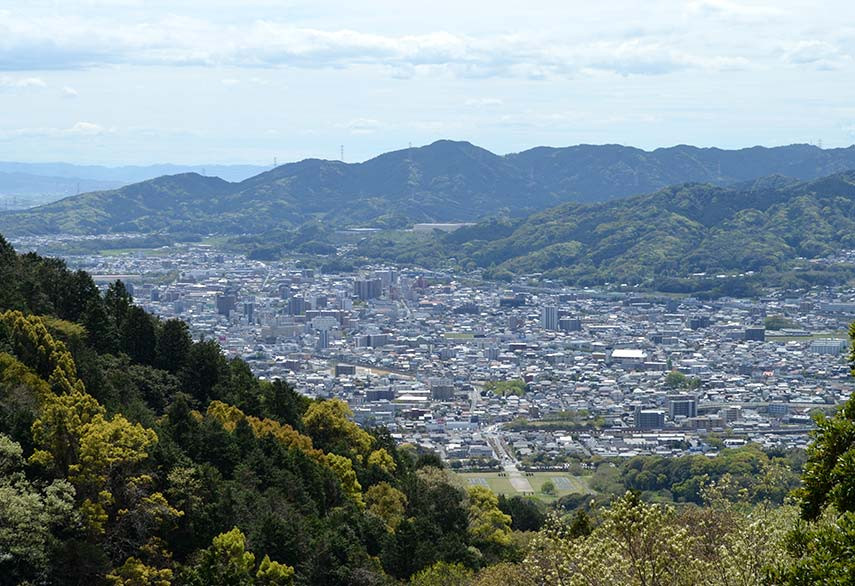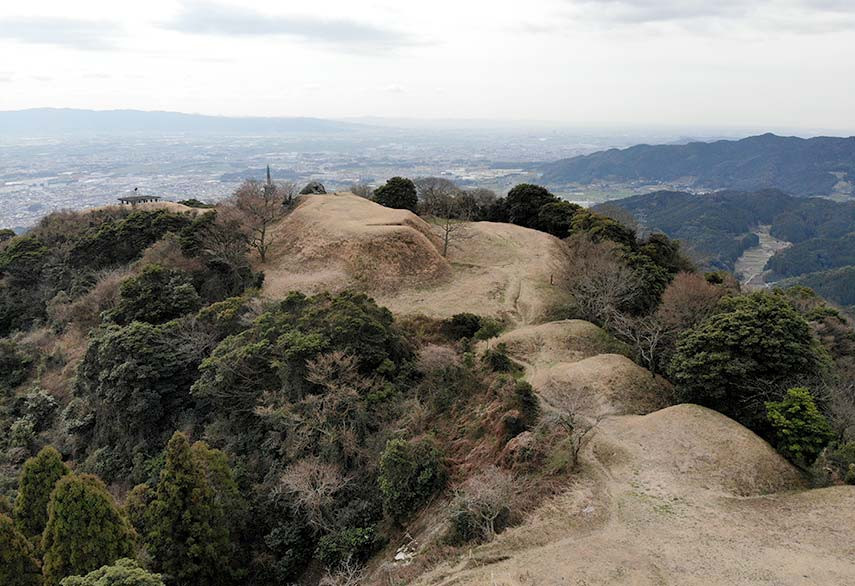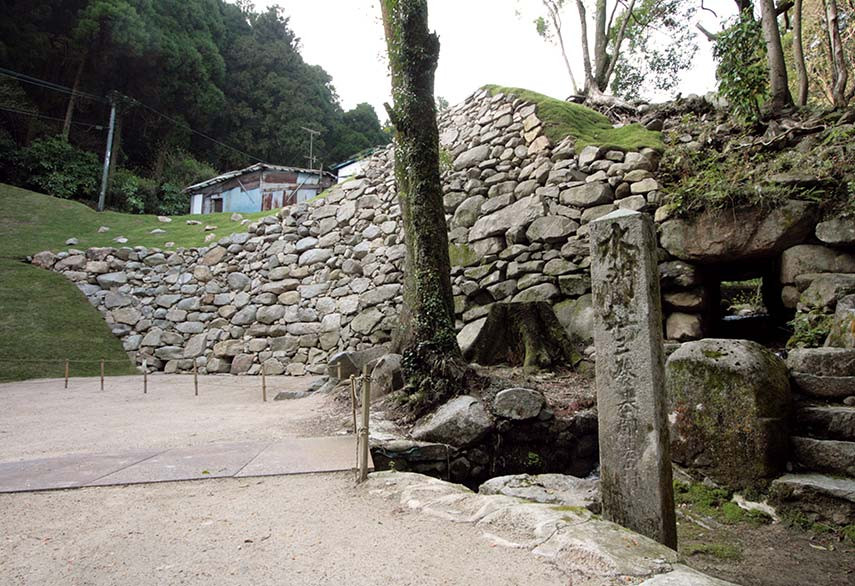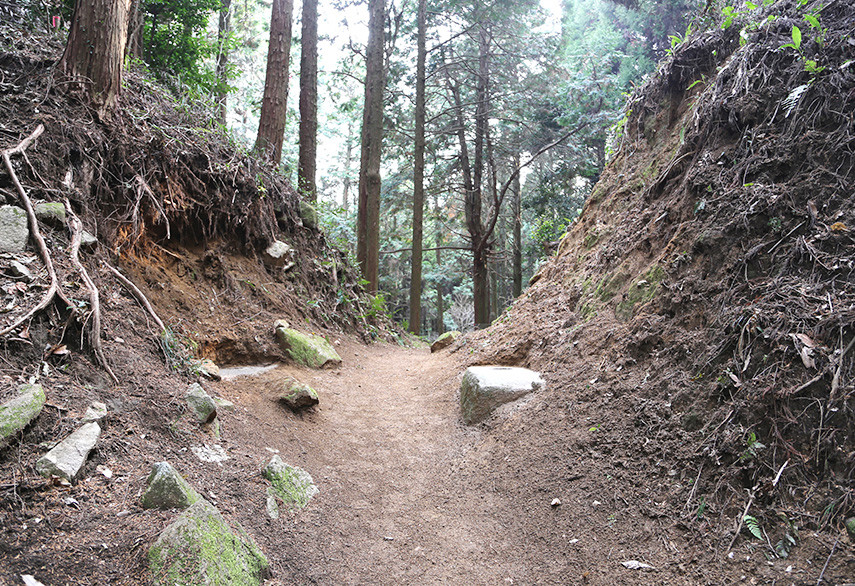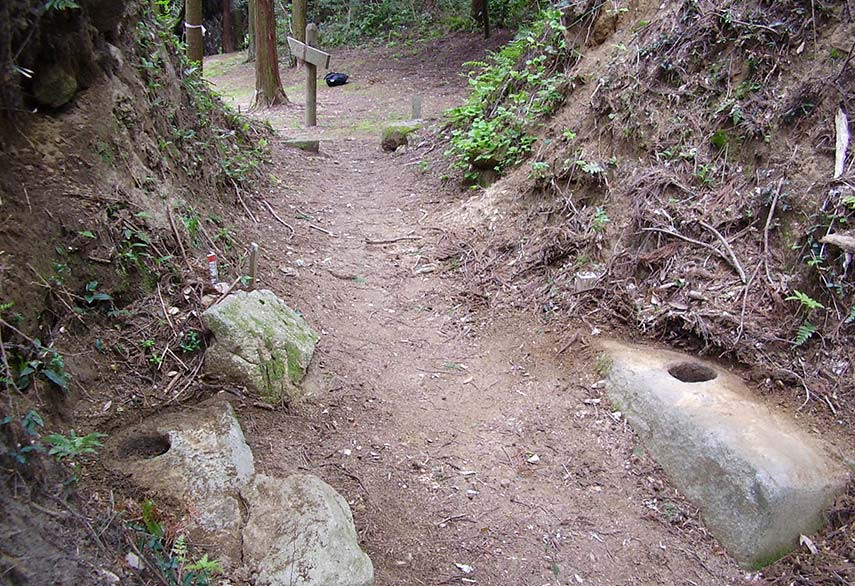
Kii-jo Mountain Fortress
| Location | City of Chikushino・Town of Kiyama |
|---|---|
| Designation | National Special Historical Site |
| Emblem |  |
This ancient mountain fortress was built in 665, the same year as Ono-jo Fortress, after the Baekje War in 663. Located on Mount Boju (404 meters high) just south of the Dazaifu Government Office, this fortress shows both the characteristics of Ono-jo Fortress or Mizuki Fortress as well as those of a Baekje fortress town.
During the Nara period, Otomo no Tabito, who had lost his wife went to the top of Kii-jo Mountain Fortress with a visiting official and composed poetry, but the once intense atmosphere has changed, and it is now a place for interaction.
An Ancient Mountain Fortress Visited By Otomo no Tabito
Kii-jo Mountain Fortress were once an ancient mountain fortress built on the eastern peak of Mount Kizan located south of Dazaifu, and with earthworks such as those at Sekiya and Toregi built at the base of the mountain, it is believed to have protected Dazaifu to the south. The earthworks were used as fortress walls stretching 4 km long, and there are the ruins of the fortress gate, the water gate, and the cornerstones of nearly 40 buildings left behind. The southernmost water gate is built with one of the longest water ditches among all ancient mountain fortress, and three smaller water ditches have been discovered alongside it. Many warehouses were built during the Nara period, and the role of the fortress started to change into a place to stockpile rice and other grains in preparation of famine or disaster, and it also began serving as a place of cultural exchange, with the Governor-general of Dazaifu Otomo no Tabito ascending to the top of the fortress in early summer with officials from Dazaifu or the capital to exchange poems.
A Northeast Gate, Where Foundation Stone Remain
These are the remains of a gate built on earthworks at the entrance to Kii-jo Fortress, where two foundation stones for the gate can still be seen in an area where the earthworks have broken off. The foundation stone is carved with round holes where the door shafts would have been inserted, from which it is estimated that there were double doors opening from the center that had a frontage of about 1.95 meters. The Northeast gate is located due south of the Dazaifu Government Building and is one of the four gates currently assumed to have existed at Kii-jo Fortress, and on the way there you can see the ruins of Ono-jo Fortress (on Mount Shioji) to the north in the distance. It’s easy to picture how people would travel in those days or how people bringing goods from the warehouses in the fortress would be checked by guards at the gate.

Chikushino City Characters/Tsukushi-chan
While only the foundation stone of this Northeast Gate remain, you can still feel the size of the earthworks and the atmosphere of this well-defended fortress gate just by passing through them.
*The cornerstones are currently protected by sandbags to prevent deterioration.

Kiyama Town Characters/Kiyaman & Kiyamaru
Facing south from the main gate of Dazaifu ruins is Mount Kizan, a mountain that appears to be an extension of Suzaku Avenue and where the ruins of Kii-jo Fortress are located. Although the remains of Dazaifu are currently not visible due to tree growth when actually climb to the top of Mount Kizan, this area offers spectacular views of Hakata Bay and Fukuoka Plain in the north, the Chikugo River and Chikugo Plain in the south, and as far as the Asakura region to the west. Near the top of Mount Kizan towers a monument made in reverence to Emperor Tenji, a testament to the local people’s attempts to spread awareness of Kii-jo Mountain Fortress.
Access Information
Address
Mount Kizan Ski Slope:841-0204 2166-1 Miyaura, Miyaki-gun, Kiyama-cho, Saga
By Train
About 1 hour 20 min on foot from JR Kiyama Station
By Car
About 15 min from the Chikushino IC on the Kyushu Expressway


About the Western Capital
The “Western Capital”, created in Tsukushi 1300 years ago. Cultural assets speaking to the magnificence of this city of international exchange that flourished in East Asia are scattered across the cities of Chikushino, Kasuga, Onojo, Dazaifu, Nakagawa, and Umi in Fukuoka Prefecture as well as the town of Kiyama in Saga Prefecture.

